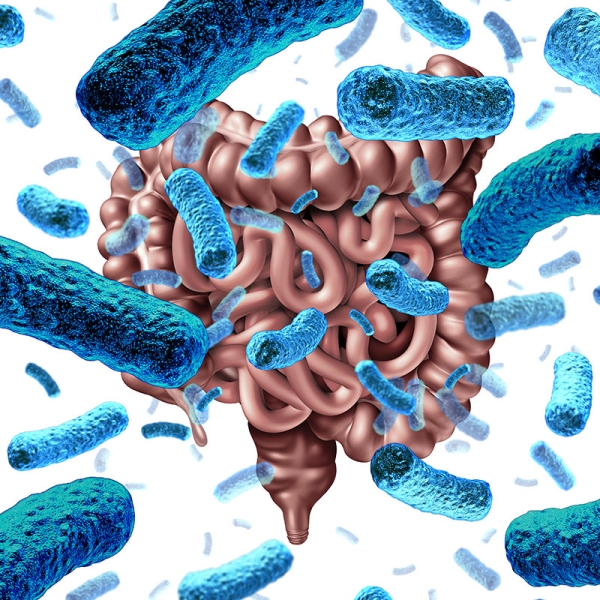26 Aug 2024 — A new study points to a new set of metabolic genes important for the proper function of the immune system’s T cells — a type of white blood cell called lymphocyte. The new findings linking inherited diseases of metabolism and immunity offer new hope for the management of such disorders.
“The concept of ‘immunometabolism’ has really only been around since the early 2000s,” study lead Andrew Patterson, Ph.D., of the Vanderbilt University Medical Center, US, tells Nutrition Insight. “Our study emphasizes how reliant immune cells (specifically CD4 type of T cells in this study) are on different metabolic pathways for their function.”
“This has implications for our basic understanding of the metabolic requirements of CD4 T cells (which could be applied to a wide range of different contexts) as well as potentially for patients with Inborn Errors of Metabolism. Many of the Inborn Errors of Metabolism are quite complex disorders, and patients diagnosed with them may have a wide range of symptoms for doctors to try and treat,” he details.
“In these cases, it may be easy to overlook immune dysfunction because the patient has more severe issues that require more attention. Our study suggests, however, that an underappreciated number of Inborn Errors of Metabolism patients may have defects intrinsic to their immune cells as well. Diagnosing and treating those defects when appropriate could improve quality of care for those patients.”

Every part of the body has its own microenvironment with different nutrient availability.Immunometabolism and precision medication
The study published in Science Immunology discusses the concept of immunometabolism. Concerning how he sees the concept evolving and what impact it could have on the future of precision medicine, Patterson says that “immune cells are wonderfully dynamic.”
“They have to be able to adapt to a wide range of different stimuli and microenvironments. A T cell can hang around in your body for years, remaining relatively quiescent with low metabolic requirements, just waiting to see its specific target (cognate antigen). When it finally does, the cell must not only rapidly grow and divide, but also differentiate to be a better responder to its target,” he explains.
“These changes require both energy and nutrient building blocks to help generate all the cellular machinery and structures the cell needs to function. Furthermore, the immune cell must migrate to the region of the body where it's needed.”
“However, every part of the body has its own microenvironment with different nutrient availability (what the nutrient cell has available in the intestines is not necessarily the same as what is available in the liver or skin).”
He says that an immune cell in that microenvironment has to adapt its metabolism to that microenvironment or it may lose its functionality, adding that this is one of the reasons why immune cells attacking tumors don't always do well.
“Trying to tweak the metabolism of immune cells based on their microenvironment is an exciting possibility to improve their function in cases like cancer or to tamp down their inflammatory ability in the context of autoimmunity.”
CRISPR gene-editing approach
Patterson and his team used a gene-editing CRISPR approach to screen the inborn errors of metabolism genes for immune defects and the inborn errors of immunity genes for metabolic defects. They analyzed one example from each set, including one metabolic gene with an immune defect and one immunity gene that had a metabolic defect, in order to more carefully examine the mechanistic impact.
“The study was built on a pooled CRISPR screening approach, in which we used CRISPR to knock out our genes of interest (those associated with the Inborn Errors) and then evaluate the broad effects of the loss of that gene in CD4 T cells. While we expected several genes to be identified in this study, it was a bit surprising how much overlap we found,” he tells us.

Patterson states that his team’s findings could be translated into potential therapies in the future.“We also used CRISPR to specifically knock out Gfpt1 in further environments. While most of the work we did with CRISPR was straightforward, the challenges lay with the caveats of the technology we used. T cells are notoriously difficult to generically manipulate, so we had to perform CRISPR in cells that had already been activated.”
“The CRISPR strategy we used also results in a full loss of protein, whereas mutations that cause the Inborn Errors of Immunity and Metabolism may cause partial or abnormal protein function. So while our approach is good for identifying immunometabolic regulators, it does not test all the specific mutations found in the Inborn Errors disorders.”
Future implications
Patterson states that his team’s findings can be translated into potential therapies, while acknowledging that “for the moment, this work is still very much on the basic sciences side of research.”
“However, we hope by identifying new metabolic regulators of the immune system, targeted therapies could be used to ‘fine tune’ in immune responses in the context of autoimmunity, cancer or infection.”
Regarding the next steps for the research team in exploring the identified genes, Patteson points the lab he recently started as an assistant professor of biochemistry and molecular genetics at the University of Louisville, US where he will continue to investigate the genes identified as immunometabolic regulators.
“We also developed an online database (the Functional ImmunoGenomics reSource) to share our CRISPR screening results so that other groups can use this data to further their own research.
By Milana Nikolova

